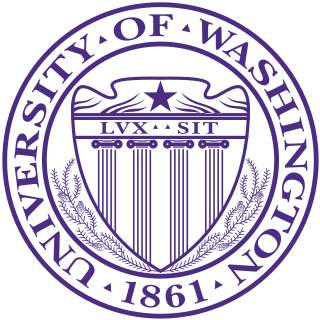
The University of Washington is a public research university in Seattle, Washington.

The Daily of the University of Washington, usually referred to in Seattle simply as The Daily, is the student newspaper of the University of Washington in Seattle, Washington, USA. It is staffed entirely by University of Washington students, excluding the publisher, advertising adviser, accounting staff, and delivery staff.

The Washington Huskies are the intercollegiate athletic teams that represent the University of Washington, located in Seattle. The school competes at the National Collegiate Athletic Association (NCAA) Division I level as a member of the Pac-12 Conference.
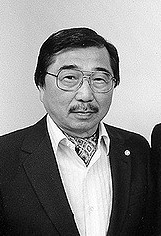
Gordon Kiyoshi Hirabayashi was an American sociologist, best known for his principled resistance to the Japanese American internment during World War II, and the court case which bears his name, Hirabayashi v. United States.

Mark Allen Emmert is the former president of the National Collegiate Athletic Association. He was the fifth CEO of the NCAA; he was named as the incoming president on April 27, 2010, and assumed his duties on November 1, 2010, and remained in office until March 1, 2023.

No-No Boy is a 1957 novel, and the only novel published by the Japanese American writer John Okada. It tells the story of a Japanese-American in the aftermath of the internment of Japanese Americans during World War II. Set in Seattle, Washington, in 1946, the novel is written in the voice of an omniscient narrator who frequently blends into the voice of the protagonist.
The following article focuses on the movement to obtain redress for the internment of Japanese Americans during World War II, and significant court cases that have shaped civil and human rights for Japanese Americans and other minorities. These cases have been the cause and/or catalyst to many changes in United States law. But mainly, they have resulted in adjusting the perception of Asian immigrants in the eyes of the American government.
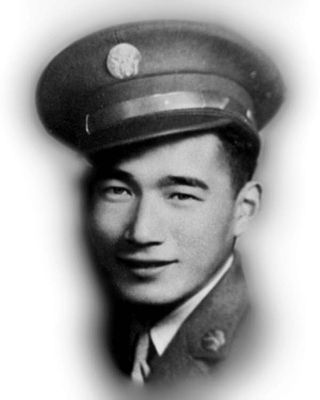
William Kenzo Nakamura was a United States Army soldier and a recipient of the United States military's highest decoration—the Medal of Honor—for his actions in World War II.
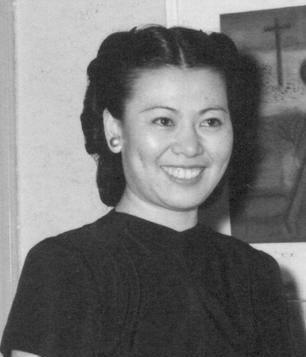
Miné Okubo was an American artist and writer. She is best known for her book Citizen 13660, a collection of 198 drawings and accompanying text chronicling her experiences in Japanese American internment camps during World War II.

University of Washington Television (UWTV) is an educational television service from the University of Washington (UW), originating from Seattle. Through online and mobile distribution formats, UWTV serves as an ambassador to the scholarship, discoveries and breakthrough science of the nation's top-ranked public research university, and also showcases campus culture, from sports to student activities. Programs are available online through video on demand and podcasting at uwtv.org, as well as YouTube and iTunes U.

The Bainbridge Island Japanese American Exclusion Memorial is an outdoor exhibit commemorating the internment of Japanese Americans from Bainbridge Island in the state of Washington. It is located on the south shore of Eagle Harbor, opposite the town of Winslow. Administratively, it is a unit of the Minidoka National Historic Site in Idaho. The mission of the memorial is Nidoto Nai Yoni, “Let It Not Happen Again”.
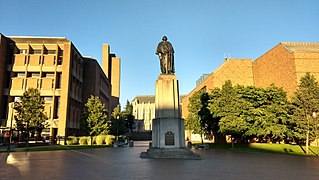
The Campus of the University of Washington is located in the University District of Seattle. Campus buildings are categorized by the major street or vicinity on which they are located on campus. In 2011, Slate magazine and Travel+Leisure described the Seattle campus as one of the most beautiful university campuses in the United States.
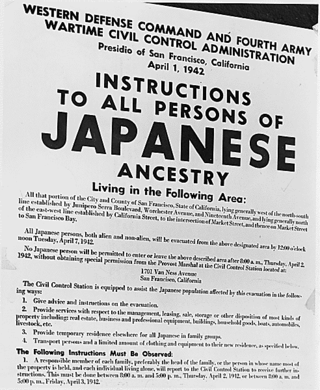
The Day of Remembrance is a day of observance for the incarceration of Japanese Americans during World War II. Events in numerous U.S. states, especially in the West Coast, are held on or near February 19, the day in 1942 that Executive Order 9066 was signed by President Franklin D. Roosevelt, requiring internment of all Americans of Japanese ancestry.
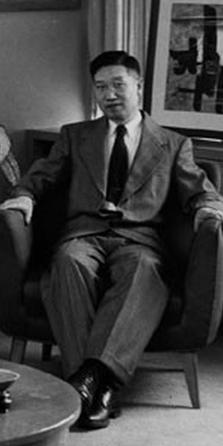
Kenjiro Nomura (1896–1956) was a Japanese American painter. Immigrating to the United States from Japan as a boy, he became a well-known artist in the Pacific Northwest in the 1920s and 30s.
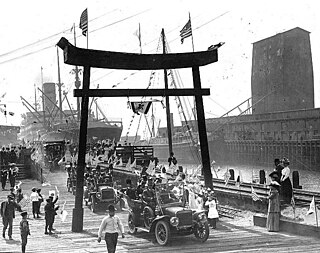
There is a population of Japanese Americans and Japanese expatriates in Greater Seattle, whose origins date back to the second half of the 19th century. Prior to World War II, Seattle's Japanese community had grown to become the second largest Nihonmachi on the West Coast of North America.

Nihon Go Gakko also known as the Japanese Language School (JLS) is a National Register of Historic Places in King County based at the Japanese Cultural and Community Center of Washington located on the periphery of the Seattle International District. The JLS provides Japanese language classes to both children and adults. Originally known as Kokugo Gakko, it is also the oldest Japanese language school in North America.

Drumheller Fountain is an outdoor fountain on the University of Washington campus in Seattle, Washington, in the United States. The fountain was given its name is 1961 to honor the University Regent Joseph Drumheller, who gifted the central fountain machinery to the University for its centennial celebration.
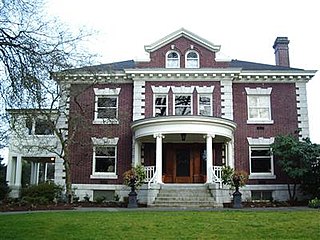
Hill-Crest is the official residence of the president of the University of Washington. As of 2013 it was the single most valuable public university presidential residence in the United States.
The Empty Chair Memorial is a memorial located at Capital School Park in downtown Juneau, Alaska, United States. It is dedicated to the 53 Juneau residents of Japanese origin who were forcibly relocated and imprisoned in inland internment camps during World War II, as well as to recognize Juneau citizens for their helpful response when the families returned after the war. It is the first memorial in Alaska regarding the internment of Japanese Americans during the war.
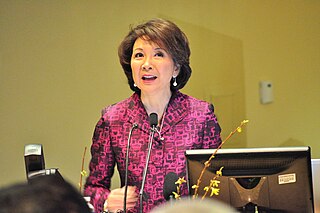
Lori Matsukawa is an American television news journalist who spent thirty-six years as evening news anchor at KING 5, the NBC affiliate in Seattle, Washington. She has won two Emmys and numerous honors from regional and national organizations for her broadcasts, which have covered everything from the imprisonment of Japanese Americans in World War II to the Olympic Games in Salt Lake City and Vancouver. She has been honored for her contributions to diversity in U.S. news media by the Asian American Journalists Association and was named Communicator of the Year by the Association for Women in Communications. In 2019, The Seattle Times newspaper featured her retirement on its front page.


















